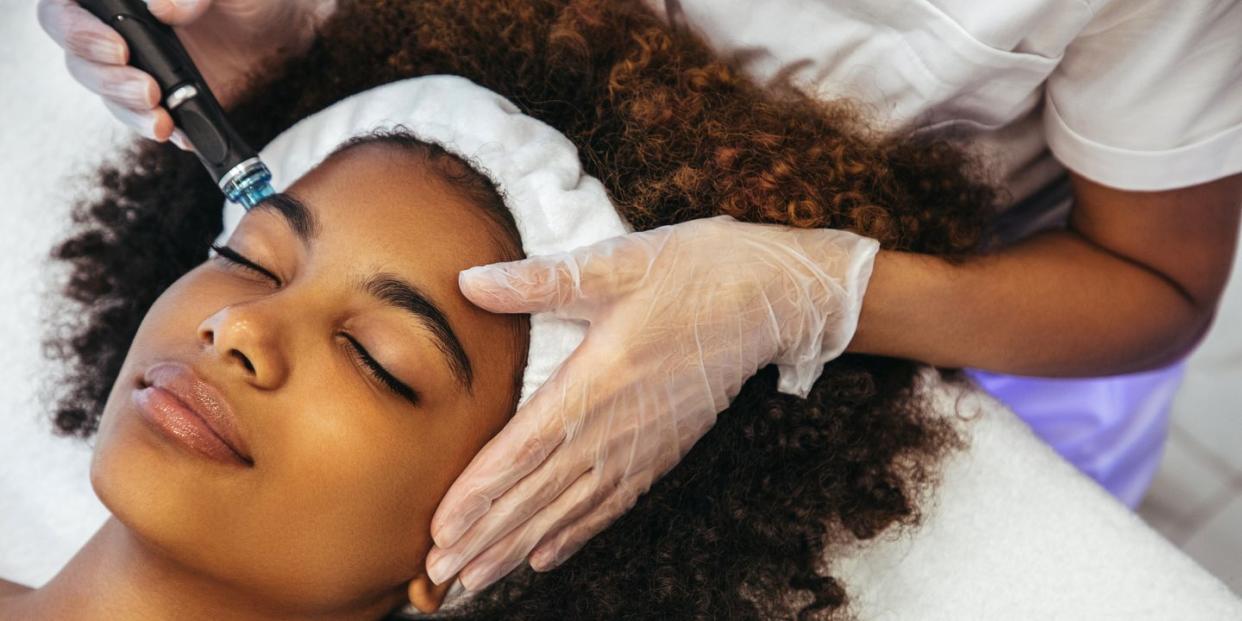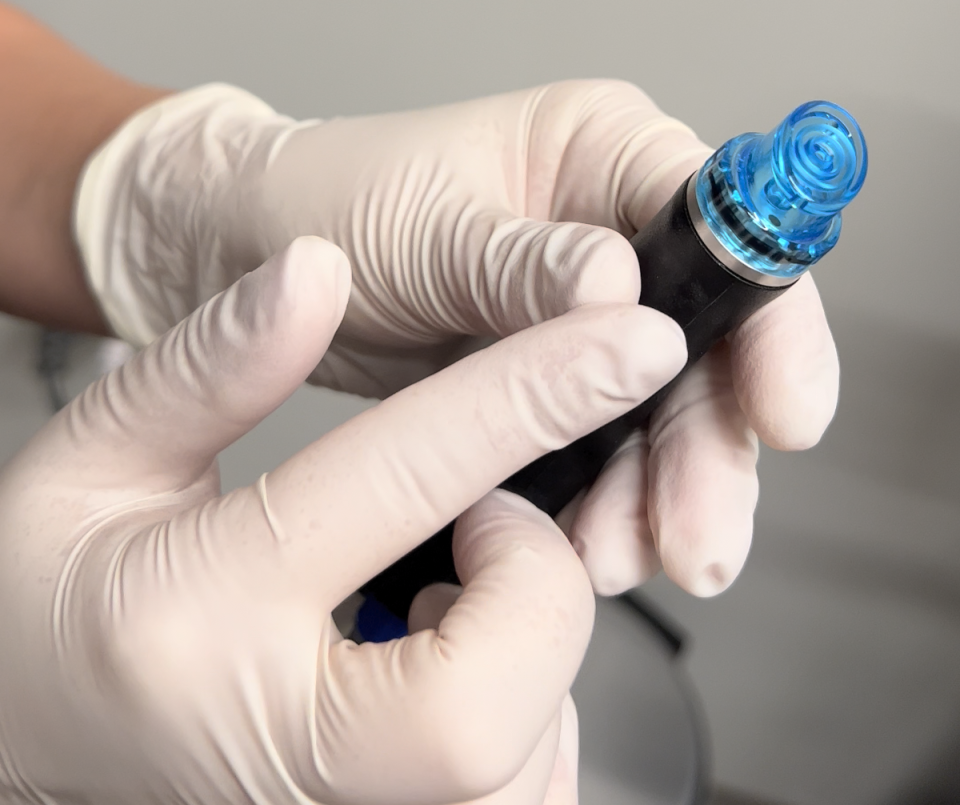The 30-Minute Facial Everyone Is Obsessed With

Everyone enjoys a bit of instant gratification when it comes to skin care, but we all know that significant results don’t typically happen overnight (even if we wish they did). But what if you could reveal more radiant, red-carpet-worthy skin after just one 30-minute treatment? That’s where the HydraFacial comes in.
“After a HydraFacial, you will experience an immediate glow,” Arash Akhavan, a board-certified cosmetic dermatologist in New York City, says. “Your skin will look much cleaner and brighter, have a smoother texture, and feel hydrated and plump.” Ahead, we explain exactly what the buzzy treatment entails, the cost, and what results to expect.

What is a HydraFacial?
Licensed medical aestheticians or dermatologists administer this medical-grade facial in three steps: cleanse and extract, peel, and hydrate. This noninvasive treatment is highly customizable depending on the patient’s skin type, sensitivity level, or concerns, and requires no downtime or recovery.
How much does a HydraFacial cost?
A HydraFacial can cost anywhere from $200 to $300-plus, but in our opinion, the treatment is worth the price tag. Akhavan recommends monthly treatments “to experience optimal results,” but patients can still reap the short-term benefits if they schedule the treatment before any major event—like a wedding, birthday celebration, or stroll down the red carpet. Of course, HydraFacials aren’t just for special occasions; their benefits can be enjoyed anytime.
What can I expect during a HydraFacial?
Cleanse and Extract
This step goes way deeper than your average face wash. “The device’s technology uses what they call ‘Vortex-Fusion’—the spiral design of the HydroPeel tips mixed with the vacuum technology,” Akhavan explains. “This helps easily dislodge and remove impurities while simultaneously delivering effective, hydrating ingredients to the skin.”
Acid Peel
The aesthetician or dermatologist will tailor the strength of the peeling phase, called GlySal, to the patient’s skin type. This step combines glycolic acid and salicylic acid to exfoliate and help even out the skin tone while treating and helping prevent future breakouts.
Hydration
Throughout the treatment, the aesthetician or dermatologist will adjust the pen tips depending on which step of the process they’re focusing on. This phase uses Vortex-Fusion to deliver a high level of hydrating ingredients and antioxidants to give you that immediate glazed donut effect.
Aftercare
Since there is no downtime following a HydraFacial treatment, the aftercare process is fairly straightforward. Patients should avoid using any exfoliators and acids on their skin for 24 hours, and reapply sunscreen often during sun exposure.
Some people may experience flaking following a HydraFacial. Don’t worry, this is easily treated by moisturizing twice a day, using a gentle cleanser, and avoiding any harsh products like retinol or chemical and physical exfoliants.

Can I DIY a HydraFacial?
Though it can be tempting to try to replicate the process at home, Akhavan advises against using at-home tools. “It is not recommended to use any pore vacuums at home,” he explains. “You can damage your skin and increase the risk of scarring.”
Peel pads, however, are a great way to maintain the HydraFacial results in between treatments.
You Might Also Like
